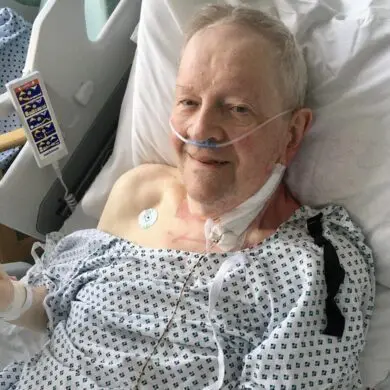Austin’s Story
Jo's son, Austin, had diarrhoea up to 25 times per day and nobody could give their family an answer.
Tell us about your family
“I’m Jo (Josephine), and I’m married to Mark who is in the army. We have two children, Austin who is three and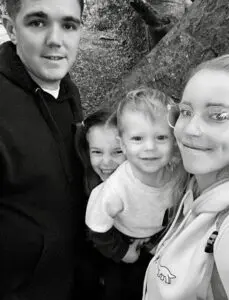 MJ (Mary-Jane) who is seven. We live in Chippenham but as a military family, we can move around often.
MJ (Mary-Jane) who is seven. We live in Chippenham but as a military family, we can move around often.
Austin and MJ have typical sibling rivalry so can scrap like cat and dog, but they adore each other. Austin is a typical boy, he loves Spiderman, super-heroes, dinosaurs and cars.”
Can you remember when you first realised Austin might have a health problem?
“At Austin’s 6-month check-up, the health visitor was really worried about his weight. Tests found Austin had a number of allergies, so we thought this was why he wasn’t putting on weight.
But the months passed and no one could understand why he still wasn’t putting weight on. He was having prescription milk to try and boost his calories and constant tests. When we started weaning him onto solid foods, we noticed his stools in his nappies weren’t right.
At 18 months old, Austin weighed just 6kg. He was really poorly, and it was horrible to watch. He’d have diarrhoea up to 25 times per day and all he did was cry. He had to be on my lap all the time. He didn’t even have the will or strength to play. I was back and forth to the hospital and doctors regularly, until eventually, one consultant said “I think he might have Pancreatic Exocrine Insufficiency” (where the pancreas doesn’t produce enough enzymes to digest food correctly).”
When was Austin diagnosed?
 “Austin’s first poo test came back as normal, as though he didn’t have anything wrong with his pancreas. His second came back with severe Pancreatic Exocrine Insufficiency. At two years old, Austin finally had an answer. From here, he was referred to a specialist team who discovered he had chronic pancreatitis, caused by the SPINK-1 gene mutation.
“Austin’s first poo test came back as normal, as though he didn’t have anything wrong with his pancreas. His second came back with severe Pancreatic Exocrine Insufficiency. At two years old, Austin finally had an answer. From here, he was referred to a specialist team who discovered he had chronic pancreatitis, caused by the SPINK-1 gene mutation.
We were given prescription pancreatic enzymes for the first time. Austin was refusing to take these in tablet form, as he was too little to understand, and he also won’t take the enzymes with things like apple puree because he dislikes certain textures (suspected autism spectrum disorder). In the end, he had an NG tube (a feeding tube through the nose) so that he could be given his food with the enzymes.”
How did you feel when Austin was diagnosed?
“Before he was diagnosed, I was made to feel like I was neurotic, making it all up or not feeding him enough. All of his scans were coming back normal, and everyone was against me. I knew he wasn’t right. My son was in a state for so long. I’m grateful we’re here now, with a diagnosis, but it was such an unnecessarily tough journey to get here.
With his NG tube, Austin suddenly started looking healthy. He put on weight. For the first time, he started to play! He has much less energy than a typical child his age, but it’s so nice to see him play with his sister.”
How are you, Jo?
“Being a medical mum is hard, especially as Mark can be away with work six months at a time. Austin’s care 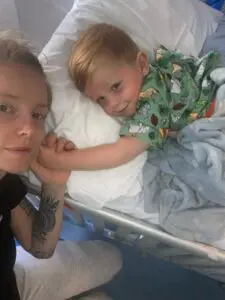 consumes my entire life. I’m constantly fighting for him. I often worry if our older daughter, MJ, is okay too, as she worries about her brother.
consumes my entire life. I’m constantly fighting for him. I often worry if our older daughter, MJ, is okay too, as she worries about her brother.
The community nurses visiting the house are so helpful. I can off-load on them and they’ll even help me ‘nag’ sometimes, chasing up prescriptions and taking the strain away from me.
People often say to me that I’m amazing, or inspiring, a ‘super-hero’ mum. But protecting your child is just what you do. You fight for your child. If you were in my position, you’d do the same.”
How is Austin doing more recently?
“Austin hates hospitals. He has Post Traumatic Stress Disorder (PTSD) so we are very honest with him, as we have 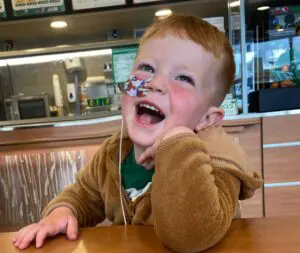 to keep his trust, which is why we won’t force him to eat the enzymes. He has to know he can trust his mum.
to keep his trust, which is why we won’t force him to eat the enzymes. He has to know he can trust his mum.
Eventually Austin’s NG tube was changed to a PEG tube (where the feeding tube goes straight into the stomach through the abdomen). His NG tube would become dislodged often, and he hated it when the nurses would come for “his wiggle” (which is what we called his tube). He’d hide under the table. The PEG has been much less traumatic for him.
Austin is the most resilient kid I’ve ever met, and he’s really good at telling me if he’s hurting. Now he can talk and tell me what’s wrong, we can work through it together. He’s a tough cookie.
I hope eventually Austin will take his enzymes by mouth. We’ve been struggling to get Austin’s pain under control with the pain relief that is available to children, but a chronic pain team are going to look at Austin’s case soon.”
Why are you sharing Austin’s story?
 “We want to raise awareness and help people understand what living with chronic pancreatitis is like, especially as a child, as it is so rare in a child of Austin’s age. Even our own circle can struggle to understand it. The more people who know about pancreatitis, the better. If anyone has to experience anything similar, they might just think about pancreatitis sooner on in the journey.”
“We want to raise awareness and help people understand what living with chronic pancreatitis is like, especially as a child, as it is so rare in a child of Austin’s age. Even our own circle can struggle to understand it. The more people who know about pancreatitis, the better. If anyone has to experience anything similar, they might just think about pancreatitis sooner on in the journey.”
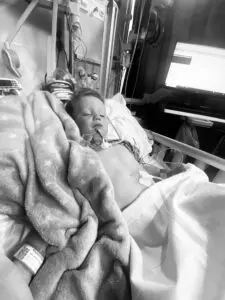 There is no effective treatment for pancreatitis. There is no cure.
There is no effective treatment for pancreatitis. There is no cure.
Guts UK is dedicated to finding an effective treatment, a cure for this misunderstood and underfunded condition. We are building a community affected by pancreatitis, comforted in knowing they’re not alone.



